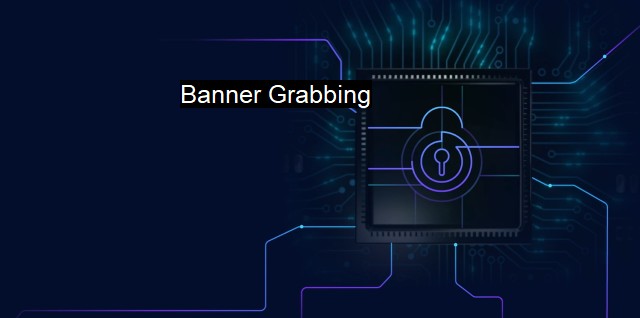What is Banner Grabbing?
Why Banner Grabbing is a Critical Cybersecurity Technique: Exploring its Applications in Reconnaissance, Vulnerability Assessment, and Penetration Testing
Banner grabbing refers to a technique used to gain information about a remote computer system on a network and the services running on its open ports. Administricians employ banner grabbing in order to keep their systems secure, while hackers utilize this technique to identify potential targets and devise potential attacks.Banner grabbing can occur both actively and passively. Active banner grabbing works through direct communication with the open ports, sending a request to an open port on the target system and triggering a response that typically includes the application's name and version number. This method is relatively intrusive, and trained cybersecurity experts can identify such attempts through the use of firewalls and intrusion detection systems.
On the other hand, passive banner grabbing involves intercepting data sent from the target system to other systems through the use of packet sniffing techniques. This method, while more covert, only provides the data that happens to be transmitted, which may or may not be helpful to a potential attacker. The information gathered in both methods varies but could include aspects like the server software, version numbers and other service related details published on the device's banner.
Banner grabbing remains pertinent because the data collection provides useful details about the potential vulnerabilities of a system. Cybersecurity professionals get insights on possible weak points that may be exploited and, in turn, can take preventive actions to protect their systems.
Banner grabbing also poses significant cyber threats. Hackers utilise such data to identify possible exploits and, armed with that knowledge, mount highly targeted attacks. Service signatures can easily reveal an outdated service module running on the network, guiding the attacker with scarily precise data to exploit the system.
There are also best practices to mitigate the risks related to banner grabbing. service obfuscation is a commonly employed strategy, where the banners of the software running on servers are manipulated so that they do not reveal accurate or direct information about the system, thereby misleading potential intruders.
Another strategy is to ensure that all services running on a system are kept up-to-date with the latest software patches. This vigilance reduces instances of compromise since outdated software is repeatedly flagged as possessing more vulnerabilities.
Firewalls also play a critical role in protecting a network from banner grabbing. They monitor incoming data packets and block suspicious traffic, thereby protecting the system from intruders. Intrusion Detection Systems (IDS) detect unauthorised accesses, raising alerts of possible banner grabbing attempts.
Banner grabbing is a double-edge sword - useful for system audit and nefarious in the hands of cybercriminals. Despite the potential risks, when handled appropriately, banner grabbing can be successfully utilised by system administrators to formulate appropriate defenses and strengthen their systems against potential cyber threats. Returning to the core element of cybersecurity – prevention is better than cure; being aware of a system's possible vulnerabilities and acting upon it promptly can be the difference between a secure network and opening the doors wide open for attackers.

Banner Grabbing FAQs
What is banner grabbing in cybersecurity?
Banner grabbing is a technique used to gather information about a remote computer system. It involves connecting to an open port on the system and requesting the "banner" - a message that identifies the software and version running on the system. This information can be useful in identifying vulnerabilities and potential attack vectors.Is banner grabbing illegal?
No, banner grabbing is not illegal. However, using the information obtained through banner grabbing to launch a cyberattack is illegal and could result in criminal charges.How can banner grabbing be prevented?
Banner grabbing can be prevented by hiding or obfuscating the banners on your systems. This can be done by disabling unnecessary services and configuring servers to respond with generic error messages instead of detailed banners. Using a firewall to block incoming connections on unused ports can also help prevent banner grabbing.Can antivirus software detect banner grabbing?
Antivirus software may not specifically detect banner grabbing, as it is not inherently malicious. However, it can detect and block the actions of a tool or script used for banner grabbing if it is classified as a threat. Additionally, antivirus software can identify and block subsequent attacks that may be launched based on the information obtained through banner grabbing.| | A | | | B | | | C | | | D | | | E | | | F | | | G | | | H | | | I | | | J | | | K | | | L | | | M | |
| | N | | | O | | | P | | | Q | | | R | | | S | | | T | | | U | | | V | | | W | | | X | | | Y | | | Z | |
| | 1 | | | 2 | | | 3 | | | 4 | | | 7 | | | 8 | | |||||||